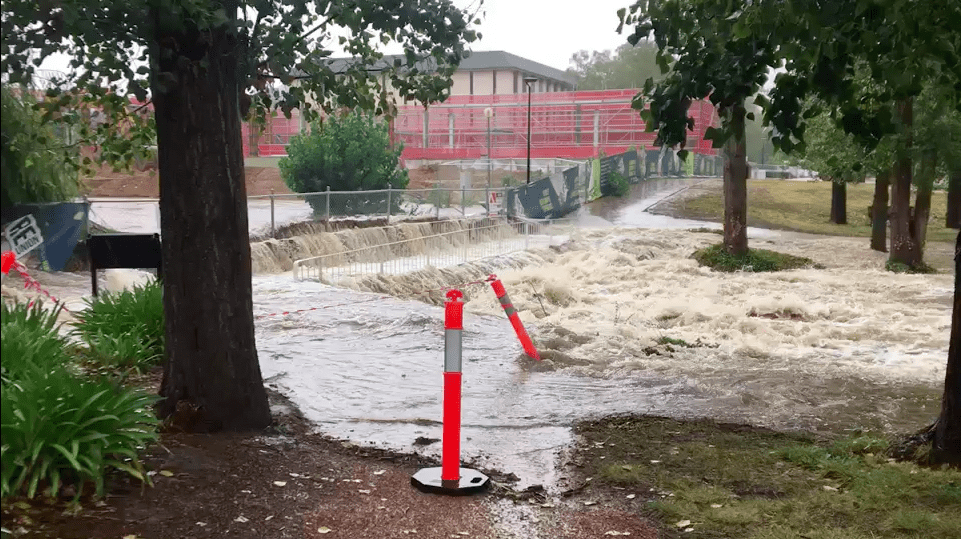It will take ANU weeks to assess the full damage of Sunday’s dramatic flash floods, but early assessments show that it is Chifley Library’s lowest floor, and construction sites across the university, that are most affected by the event.
In a press conference on Monday afternoon, ANU’s Chief Operating Officer Chris Grange told media that things could have been a lot worse if the flooding occurred on a weekday:
“We should be really grateful that yesterday’s flood came on a Sunday,” Grange said. “The good news is: we’ll be open again tomorrow.”
The most serious damage occurred in buildings closest to Sullivan’s Creek, including Chifley Library, the AD Hope building, and construction sites.
“We had about half a metre of water through the bottom of Chifley Library. We lost the electrical distribution boards, the air conditioning and the ventilation systems, and the IT infrastructure for the library,” Grange explained.
The library will be reopened by Friday. It is unclear what books were damaged, and of what value they are.
In the AD Hope building, which houses much of the School of Archaeology and Anthropology, the lower ground floor was significantly affected, including damage to a number of materials and papers. According to Grange, the damage could take more than 12 months to properly amend.
Within construction sites, 11 excavators were submerged. It is unclear whether the damage will significantly delay Union Court Reconstruction efforts.
Vice-chancellor Brian Schmidt said that the closure of campus was necessary to ensure the safety of staff and students.
“We closed the campus on Monday to allow essential safety checks on infrastructure including bridges, creek banks and electrical switchboards,” he said. “I’d like to thank our students and staff for their support and cooperation during the closure.”
Other buildings that were affected included Toad Hall, which took on 250mm of water, as well as the John Dedman building. The Tjabal Centre and Melville Hall were also flooded. As a precaution, three substations were shut down, which cut off power to a large part of the university.
The last time ANU was closed down was in February 2007, when a supercell hailstorm wrecked a number of ceilings across campus, and caused fire alarms to start ringing.
Floods are a rarer occurrence: in 1947, when ANU’s Acton campus was brand new, Sullivan’s Creek overflowed significantly and caused sustained damage. In 1961, Chifley Library took on water in a similar event – and, in 1971, almost all of Canberra was hit by a major flood that took the lives of seven people.
We acknowledge the Ngunnawal and Ngambri people, who are the Traditional Custodians of the land on which Woroni, Woroni Radio and Woroni TV are created, edited, published, printed and distributed. We pay our respects to Elders past and present. We acknowledge that the name Woroni was taken from the Wadi Wadi Nation without permission, and we are striving to do better for future reconciliation.
